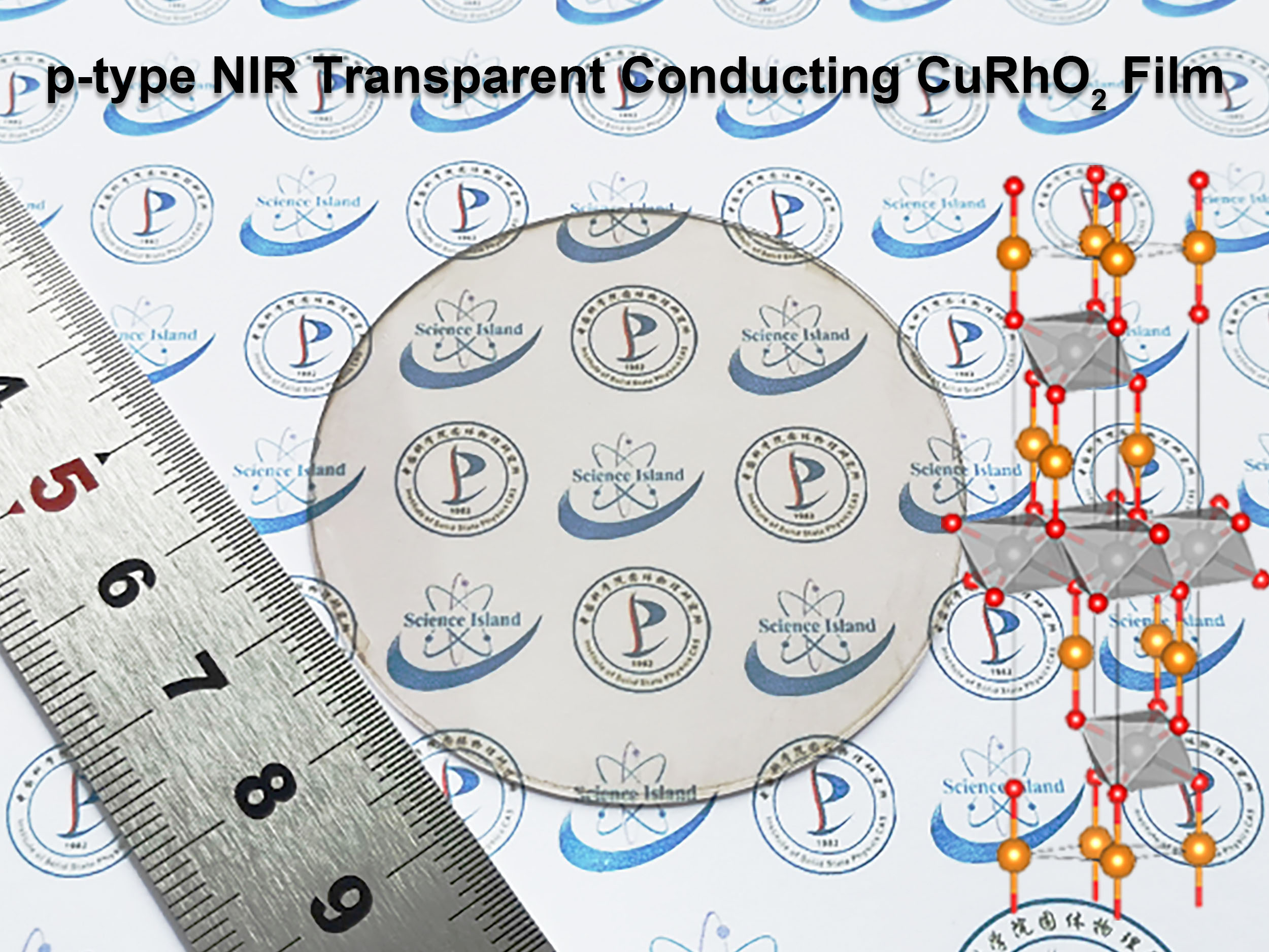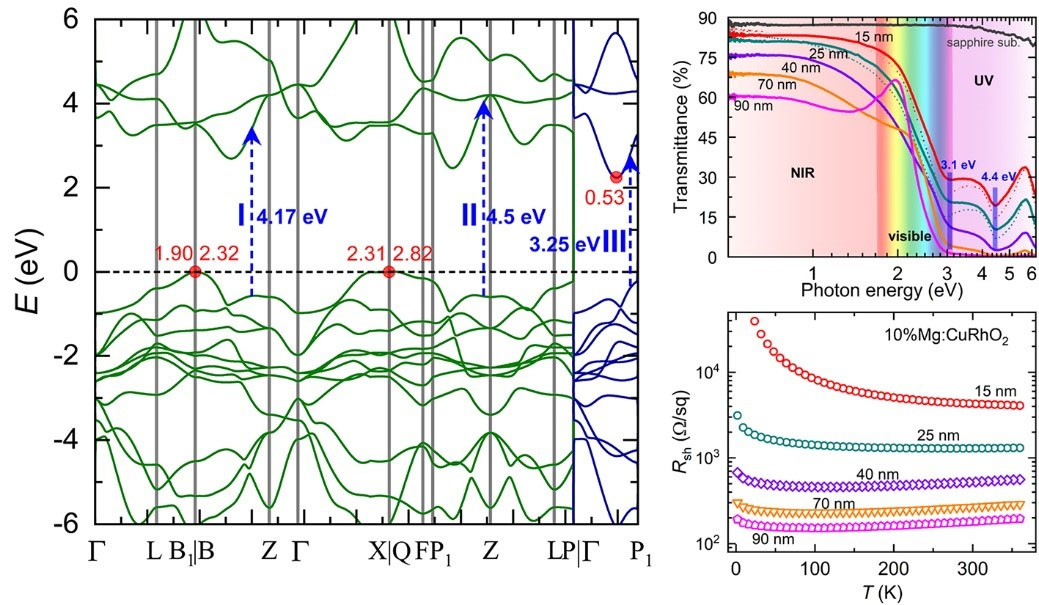| Jan 19, 2022 |
New p-type near-infrared transparent conducting thin films developed with better performance
(Nanowerk News) A group of scientists at the Hefei Institutes of Physical Sciences of the Chinese Academy of Sciences has developed new p-type (positive hole) near infrared (NIR) transparent conducting (TC) films with ultra-high conductivity, unveiling a new transparent conducting material (Advanced Optical Materials, "p-Type Near-Infrared Transparent Delafossite Thin Films with Ultrahigh Conductivity").
|
 |
| Fig. 1. Photo of p-type NIR TCCuRhO2 thin film with 2 inches size. (Image: WEI Renhuai)
|
|
"They have extraordinary properties," WEI Renhuai, a physicist who led the team, "the NIR optical transmittance of the films can reach as high as 85~60%, while maintaining the film resistance at room temperature at a low level."
|
|
In recent years, p-type TC has attracted extensive attention. Although n-type (negative electron) TC is common in current market, the incorporation of p-type TC and n-type TC can achieve invisible active circuit heterostructure.
|
|
Compared with traditional delafossite-based P-type TC, the room-temperature conductivity of this novel TC is much higher. In addition, the films also exhibit high near-infrared transmittance with a low room-temperature sheet resistance.
|
 |
| Fig. 2. Calculated electronic band structure for the CuRhO2 (left).Optical transmittance and room-temperature sheet resistance for 10%Mg-doped CuRhO2 thin films (right). (Image: WEI Renhuai)
|
|
In the experiment, based on the first-principles calculations, the scientists found that CuRhO2 showed p-type conducting characteristics and processed a narrow indirect bandgap of 2.31 eV.
|
|
Meanwhile, the optical absorption in the NIR and visible range is much low. The larger Rh3+ ionic radius makes the CuRhO2 accept hole-type carriers with high concentration.
|
|
The great advance in p-type NIR TC CuRhO2 thin films, based on both theoretical calculations and experimental results, will significantly improve the development of future multifunctional invisible optoelectronic devices.
|


